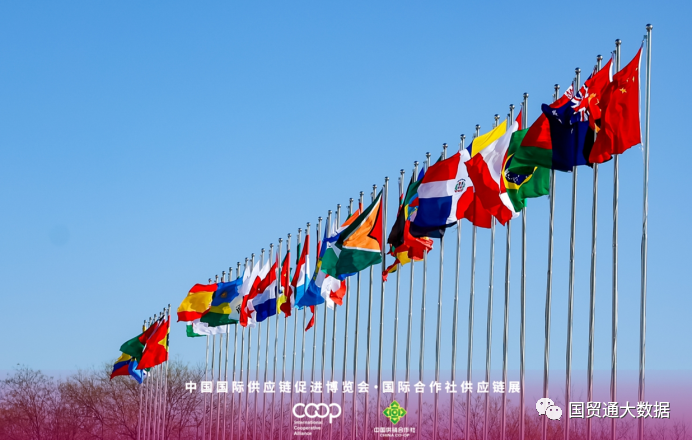
New Trends in Global Health Product Trade: Opportunities and Strategies for Chinese Exports
“Driven by rising global health awareness and the restructuring of international trade, the health product industry is experiencing a new wave of growth. As a key link in the global health product supply chain, China has demonstrated significant competitive advantages in the international market, thanks to continuous policy support, a mature industrial base, and an increasingly innovative product system.”
Driven by rising global health awareness and the restructuring of international trade, the health product industry is experiencing a new wave of growth. As a key link in the global health product supply chain, China has demonstrated significant competitive advantages in the international market, thanks to continuous policy support, a mature industrial base, and an increasingly innovative product system. Currently, multiple regional trade agreements are continuing to deliver benefits, demand in emerging markets is rapidly expanding, and digital channels have significantly lowered barriers to entry—creating unprecedented opportunities for the export of Chinese health foods, dietary supplements, and functional products.
I. Policy and Regional Cooperation Bring New Opportunities
With the further implementation of the Regional Comprehensive Economic Partnership (RCEP), tariffs on health products between China and member countries such as ASEAN, Japan, and South Korea have been significantly reduced, while inspection and quarantine procedures have been streamlined, greatly facilitating market expansion in the Asia-Pacific region. At the same time, cooperation memorandums signed between China and various countries and regions in Europe and Latin America are being progressively implemented, boosting sustained growth in the export of health products and functional foods. In the first half of 2024, China’s export value of plant extracts increased by over 18% year-on-year, with natural raw materials and herbal supplements gaining growing international recognition.
II. Emerging Markets Become New Engines of Growth
Beyond traditional European and American markets, countries involved in the Belt and Road Initiative and other emerging economies are becoming major growth drivers for China’s health product exports. So far in 2024, exports of health products to the Middle East, Russia, Africa, and other regions have significantly increased, with strong demand for anti-fatigue products, immunity boosters, and region-specific items such as anti-malaria health products. For example, in countries like Saudi Arabia and Nigeria, younger demographics and rapidly growing health consumption are driving increased acceptance of Chinese-made vitamins, mineral supplements, and sports nutrition products.
III. High-Value-Added Products Lead International Trends
Global health consumption is increasingly characterized by functionality, personalization, and scenario-specific applications. Chinese companies are no longer limited to supplying raw materials but are increasingly shifting toward finished branded products. Categories such as fish oil, probiotics, and specialty plant extracts continue to lead the market, while innovative products like genetically customized nutrition, vegan supplements, and portable formats (e.g., gummy and jelly-type health products) are also gaining prominence internationally. Many enterprises leverage China’s mature supply chain and rapid response capabilities to quickly adapt to overseas consumers’ demands for product form, ingredient transparency, and sustainable sourcing.
IV. Cross-Border E-Commerce Reshapes Export Pathways
Digital trade has become one of the main channels for health product exports. In 2024, the volume of health products exported via platforms such as Alibaba International Station, Amazon, and TikTok Shop continues to grow. Social e-commerce and overseas independent websites effectively help Chinese companies build brand awareness and reduce trial-and-error costs. It is particularly noteworthy that many small and medium-sized enterprises are using a “small-scale wholesale + digital marketing” model to precisely target niche markets, achieving rapid deployment in regions such as Southeast Asia and the Middle East.
V. Major Export Regions and Flows
The trade flow of Chinese health product exports is characterized by diversification, regionalization, and high growth. Major export destinations include Southeast Asia, North America, Europe, and countries participating in the Belt and Road Initiative. In recent years, supported by policies, rising market demand, and the development of cross-border channels, the export structure has continued to optimize, with a noticeable trend toward high-value-added products and branded exports.
The trade flow of Chinese health product exports is expanding from traditional markets to emerging regions and upgrading from raw material exports to branded exports. If companies can capitalize on policy benefits, market differentiation, and digital channels, they are poised to capture a larger share of the global health market.
Conclusion
Amid dual transformations in global health and economic landscapes, China’s health product exports are transitioning from “scale expansion” to “structural optimization” and “brand export.” Enterprises should proactively seize policy and market opportunities, continuously advance product development and compliance capabilities, and actively diversify their channels to secure sustained growth momentum in the promising global health market.













